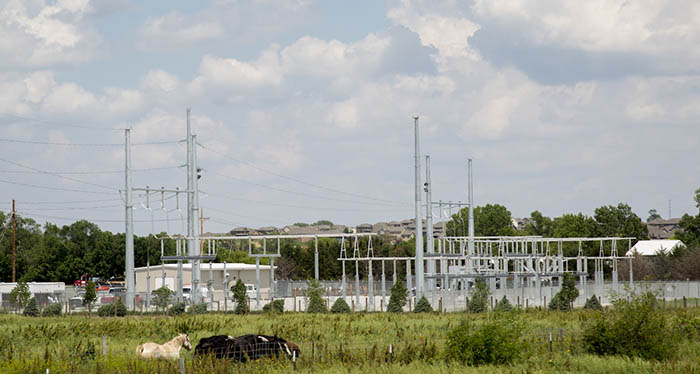
WHAT are they?
Large, gray installations situated between a power generator, such as Nebraska City Station, and customers. Essentially, substations help route electricity and transform it into usable voltages.
Their protection and control relays act like a brain, collecting stimuli from the grid and sharing it with OPPD’s Energy Control Center. If the relays detect a problem, such as a short-circuit or overload, they automatically engage the substation’s breakers. These act like muscles that interrupt the flow of electricity to isolate the problem. Power is rerouted to help minimize the area and duration of a potential outage.
When it’s time for routine maintenance, the breakers isolate sections and enable crews to work safely without interrupting the flow of electricity to the remainder of the system.

Substations come in various shapes and sizes, and have multiple functions. These include stepping up voltage and allowing energy to travel long distances through OPPD’s transmission system. Others step down the voltage, making the electricity usable by customers.
Substations are smart and heavily automated. OPPD works around the clock and calendar to keep them ready, resilient and secure.
HOW MANY ARE THERE?
OPPD has around 130 substations serving its 369,000 customers.
WHOSE ARE THEY?
OPPD owns all of its high-voltage substations. Some of the lower-voltage substations – 15 kilovolts and lower – are “customer” substations.
HOW ARE THEY DESIGNED & BUILT?
As the demand landscape changes, OPPD forecasts energy needs and works with communities and customers to select a suitable substation site.
Once they do an environmental assessment and purchase the land, OPPD designs and builds the substation in about 12 to 18 months. They can cost up to $5 million each and last more than 40 years. OPPD’s Substation, System Protection, Substation Engineering and other departments collaborate on the design, construction, maintenance and operation of the utility’s substations.









